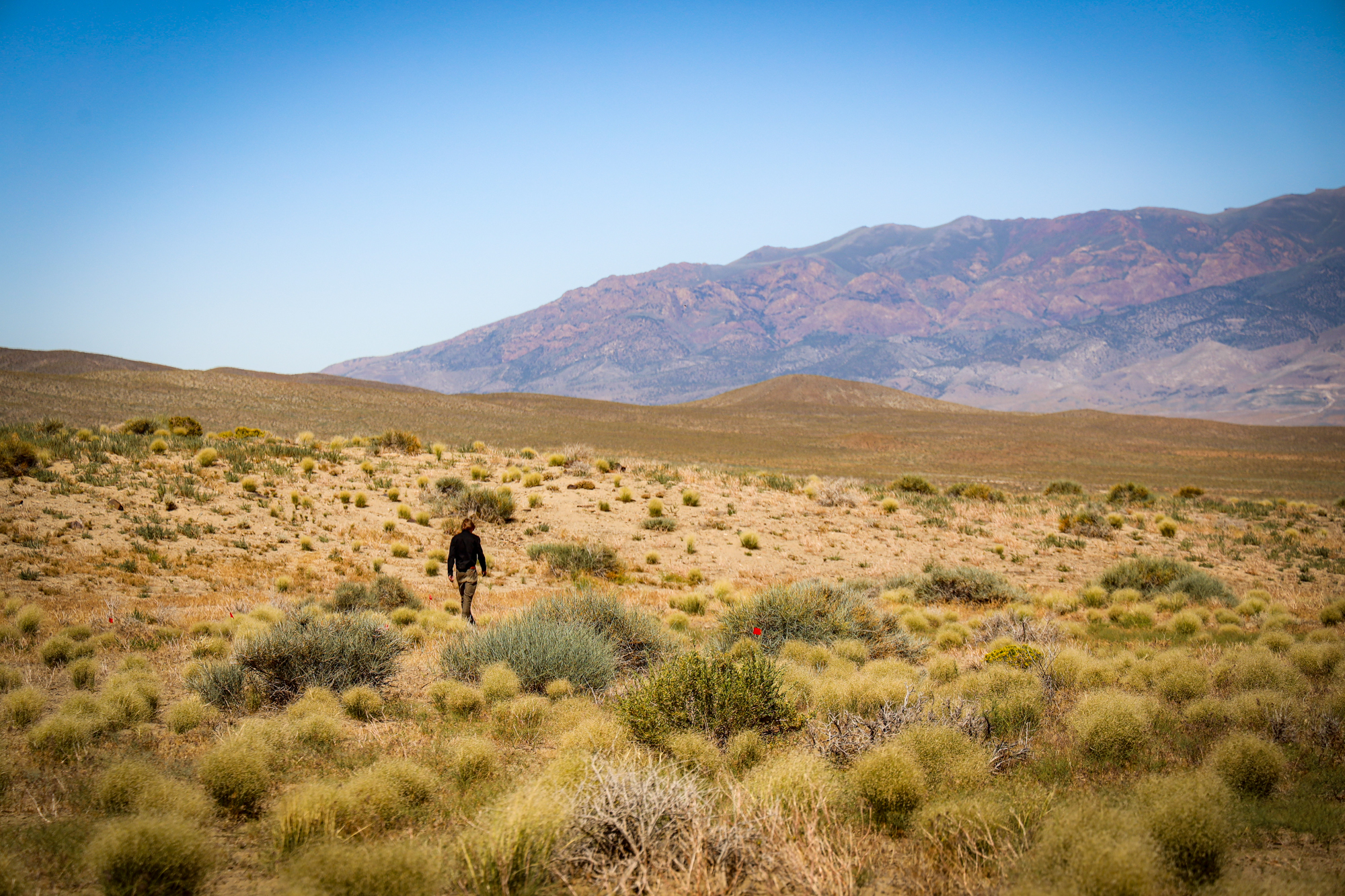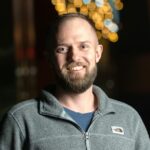Blackbird crash site highlights Nevada’s key role in Cold War era aerospace testing

In a nondescript patch of high desert north of Lovelock, nestled between two dry creek beds, the only indication of where a 60-foot impact crater once was is a patch of tall grass standing out amidst the sagebrush.
As he sat on the tailgate of his Jeep, Taylor Wilson laces up his desert boots.
“What I love about these places, whether I'm looking for uranium or spy planes or atomic bombs, is you would never think this spot was interesting,” he says. “It's just an average spot out in the desert. But little do they know.”
Wilson is Reno-based a nuclear physicist who became famous for being the youngest person to achieve nuclear fusion in 2008 when he was just 14. Since then, he’s worked on a range of projects in collaboration with industry, academia and the federal government, with radioactivity being a common thread.
He was especially drawn to this lonely spot in the desert because of a single line in a crash report from 1967: Two pieces of debris emitted radioactivity five times greater than the normal background level.
The crash report was for an SR-71 Blackbird. The crown jewel of aerospace defense contractor Lockheed Martin’s Advanced Development Projects division, also known as Skunk Works, the Blackbird remains the fastest manned jet with air-breathing engines ever built. At over three times the speed of sound, it could fly from Washington, D.C., to Los Angeles in less than 65 minutes.

Wilson is fascinated by all the new technologies that had to be developed to build the Blackbird.
“It was the first plane to be made primarily out of titanium because titanium was the only metal that could handle the heat associated with supersonic flight in this regime,” said Wilson. “So many things about this aircraft were incredibly ahead of their time. It's probably no surprise that this thing spawned a lot of UFO reports.”
The CIA wanted the Blackbird to replace the U-2 as its go-to spy plane, but according to Peter Merlin, a historian and writer who has been studying Nevada’s mysterious Area 51 and aviation history for more than 40 years, the agency thought the traditional test site, Edwards Air Force Base in Southern California, was too public.
“It's kind of an open base. It's around a lot of communities. You know, it's not far from Los Angeles. Too many people would see the plane and be able to start figuring out things about its performance,” said Merlin.
So they looked to the Nevada nuclear test site and a dry lake bed northeast of Las Vegas. The location was remote, and the proximity to nuclear testing meant they could use the cover of the Atomic Energy Commission to justify the secrecy. So the CIA paid to develop an airfield, situated next to the lake bed called Groom Lake, and Area 51 was born.


While the U-2 started flying out of the Nevada site in 1955, the first flight of the Blackbird took place on April 30, 1962. In 1999, National Reconnaissance Office historian Gerald K. Haines released a study citing CIA officials who worked on the U2 and Blackbird projects who said “over half of all UFO reports from late 1950s through the 1960s were accounted for by manned reconnaissance flights over the United States.”
Speculation about Area 51 and what goes on there accelerated in the 1980s when UFOs and extraterrestrial life rose in pop culture. The small, sparsely populated communities around the base have embraced that mythology with things like the Little A'Le'Inn, an alien-themed motel, or the nickname for the hundred-mile-long Nevada State Highway 375 – the Extraterrestrial Highway.
Merlin said that looking at some of the planes tested at Area 51 it’s understandable how people mistake some of the aircraft for flying saucers or alien technology. He said the association between Nevada and UFOs is so “ingrained in the general consciousness, if you say Area 51, the first thing someone will think of is aliens, when they should be thinking about airplanes.”
The Blackbird that crashed just north of Lovelock on Oct. 25, 1967, designated Aspen 28, started its training flight at Beale Air Force base in Northern California, heading southeast through New Mexico before turning north toward Salt Lake City. It started its descent and deceleration from cruise near Elko after just over two hours of flight time.
In an era before GPS, the Blackbird relied on an Astroinertial Navigation System. Nicknamed R2-D2, the system combined navigation by stars with inertial information from the aircraft’s on-board sensors and could locate the Blackbird to within 300 feet.
However, this system failed on Aspen 28. This led to the pilot of the 107-foot-long supersonic needle-shaped plane, Maj. Roy L. St. Martin, losing control and crashing into the desert floor, but not before safely ejecting along with his reconnaissance systems officer, Capt. John A. F. Carnochan.


As Wilson surveyed the crash site he had been to a number of times before, he was still able to find large pieces of titanium that had been sheared clean in the crash.
“You can actually see the grain structure of the titanium,” Wilson said. “You show that to a machinist and their eyes just light up because they're like, ‘How do you get titanium to be worked like that?’ Well, in a spy plane crash, that's how.”
While Wilson never found any radioactive materials when exploring the Aspen 28 crash site, he got to find pieces of aerospace history.
“I think your average Nevadan doesn't realize what's going on in the skies above him or her on a given day. And this aerospace development that led to the SR-71 Blackbird is still going on today.”
Now, technology that originated in testing the SR-71 and other experimental planes at Area 51 is being used in the newly announced X-59. It’s keeping alive the dream of hopping on a flight at the airport in Los Angeles and landing in New York 65 minutes later.

